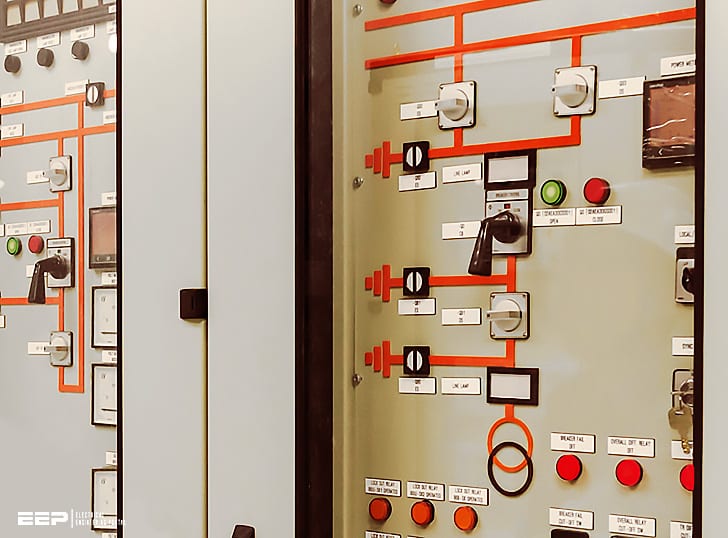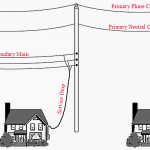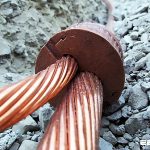Radial networks
Radial operation is the most widespread and most economic design of both MV and LV networks. It provides a sufficiently high degree of reliability and service continuity for most customers.
In American (120 V) systems, the customers are commonly supplied directly from the distribution transformers via relatively short service drop lines, in star-like topology.
In 240 V systems, the customers are served by several low-voltage feeders, realized by overhead power lines, aerial or underground power cables, or their mixture.

Figure 4 – Typical layout of radial low-voltage network
In an overhead network, service drops are drawn from pole tops to roof connections. In a cable network, all necessary connections and protection devices are typically placed in pad-mounted cabinets or, occasionally, manholes (buried T-joint connections are prone to failures).
Power-system protection in radial networks is simple to design and implement, since short-circuit currents have only one possible path that needs to be interrupted.
Fuses are most commonly used for both short-circuit and overload protection, while low-voltage circuit breakers may be used in special circumstances.

Major distribution equipment
Spot networks
Spot networks are used when increased reliability of supply is required for important customers. The low-voltage network is supplied from two or more distribution transformers at a single site, each fed from a different MV feeder (which may originate from the same or different substations).
The transformers are connected together with a bus or a cable on secondary side, termed paralleling bus or collector bus. The paralleling bus typically does not have connecting cables (reaches) to other network units, in which case such networks are termed isolating spot networks. When they have, they are referred to as spot networks with reach.
In some cases, fast-acting secondary bus tie breakers may be applied between bus sections to isolate faults in the secondary switchgear and limit loss of service.
Spot systems are commonly applied in high load-density areas such as business districts, large hospitals, small industry and important facilities such as water supply systems.
In normal operation, the energy supply is provided by both primary feeders in parallel. In case of an outage of either primary feeder, network protector device at the corresponding spot transformer secondary automatically opens. The remaining transformers continue to provide supply through their respective primary feeders.

Figure 5 – Typical layout of a spot low-voltage network
Only in cases when the short circuit is located at the paralleling bus, or a total loss of primary supply occurs, the customer will remain out of service. Faults on the low-voltage network are handled by fuses or local circuit breakers, resulting in loss of service only for the affected loads.
Grid networks
A grid networks consist of an interconnected grid of circuits, energized from several primary feeders through distribution transformers at multiple locations. Grid networks are typically featured in downtowns of large cities, with connecting cables laid out in underground conduits along the streets.
Numerous cables allow for multiple current paths from every transformer to every load within the grid.
As with spot networks, network protectors are used to protect against primary feeder faults, and prevent fault current to propagate from the grid to the primary feeder.
Individual cable sections may be protected by cable limiters on both ends, special fuses providing very fast short-circuit protection.
The inherent system redundancy generally prevents any customer from experiencing outage.

Figure 6 – Layout of a grid low-voltage network


